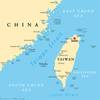Australia to Get US Nuclear Submarine Tech as China Looms Large
The United States, Britain and Australia will establish a security partnership for the Indo-Pacific that will involve helping Australia acquire nuclear-powered submarines, senior U.S. officials said on Wednesday, as Chinese influence over the region grows.
Under the partnership, to be announced on Wednesday by President Joe Biden, British Prime Minster Boris Johnson and Australian Prime Minister Scott Morrison, the United States will provide Australia with the technology and capability to deploy nuclear-powered submarines, the officials told reporters.
They stressed that the move, which comes as Washington and its allies are looking for ways to push back against China’s growing power and influence, would not involve provision of nuclear weapons to Australia. They said the submarines would not be deployed with atomic weaponry, but would allow the Australian navy to operate more quietly, for longer periods, and provide deterrence across the Indo-Pacific.
The officials said the partnership, which will also involve cooperation in areas including artificial intelligence, quantum technology and cyber, was “not aimed at any one country.”
“This is a historic announcement. It reflects the Biden administration’s determination to build stronger partnerships to sustain peace and stability across the entire Indo-Pacific region,” one of the officials said.
The partnership looks likely to end Australia’s attempts to have French shipbuilder Naval Group build it a new submarine fleet worth $40 billion to replace its more than two-decades-old Collins submarines, Australian media reported.
It has been one of the world’s most lucrative defense deals, but has been beset by issues and delays due to Canberra’s requirement that the majority of the manufacturing and components be sourced locally.
“This new architecture is really about deepening cooperation on a range of defense capabilities for the 21st century, and ... these relationships with Great Britain and Australia are time- tested,” the U.S. official said.
While the officials took pains to say China was not the target, the United States and its Asian allies have expressed growing alarm at Beijing’s military buildup, pressure on Taiwan and deployments in the contested South China Sea.
The official said the three countries would launch an 18-month effort involving technical, strategic and navy teams to identify “the best ways for Australia to pursue nuclear-powered submarines.”
“This will give Australia the capability for their submarines to basically deploy for a longer period, they’re quieter, they’re much more capable. They will allow us to sustain and to improve deterrence across the Indo-Pacific,” the official said.
The pact should be a boon for the U.S. defense industry and among the firms that could benefit are General Dynamics and Huntington Ingalls Industries, which lead the U.S. submarine industrial base, which includes thousands of other companies.
General Dynamics’ Electric Boat business does much of the design work for U.S. submarines, but critical subsystems such as electronics and nuclear powerplants made by BWX Technologies Inc
Britain described it as a very significant announcement and said the 18-month program would work out details as to what countries and companies would do what, with the aim is for the first submarine to be delivered as quickly as possible.
“This partnership will become increasingly vital for defending our interests in the Indo-Pacific region and, by extension, protecting our people back at home,” Johnson said in statement.
The U.S. official said the announcement was the result of several months of engagements between respective military commands and political leaderships, during which Britain - which recently sent an aircraft carrier to Asia - had indicated it wanted to do more in the region.
“What we’ve heard in all those conversations is a desire for Great Britain to substantially step up its game in the Indo-Pacific,” the official said.
“Obviously, Great Britain has enormous responsibilities and interests in Europe and in the Middle East, but it also has deep historical ties to Asia.”
The U.S. official said the United States had shared nuclear propulsion technology only once before - with Britain in 1958 - and added: “This technology is extremely sensitive. This is frankly an exception to our policy in many respects, I do not anticipate that this will be undertaken in other circumstances going forward. We view this as a one-off.”
The official said the move was being taken as part of “a larger constellation of steps” in the region, including stronger bilateral partnerships with long-term allies Japan, South Korea, Thailand and the Philippines, and stronger engagements with new partners like India and Vietnam.
The U.S. official said Biden had not mentioned the plans for the trilateral partnership “in any specific terms” to Chinese leader Xi Jinping in call last Thursday, but the U.S. president did “underscore our determination to play a strong role in the Indo-Pacific.”
The announcement comes just over a week before Biden is to host a first in-person meeting of leaders of the “Quad” group of countries - Australia, India, Japan and the United States - that Washington sees as a key means to stand up to China.
The Biden administration has declared the Indo-Pacific its key foreign policy focus and the region has seen a series of high profile visits from top U.S. officials, including Vice President Kamala Harris.
(Reporting by Steve Holland, Nandita Bose, David Brunnstrom and Mike Stone; additional reporting by John Irish in Paris Editing by Alistair Bell)
















